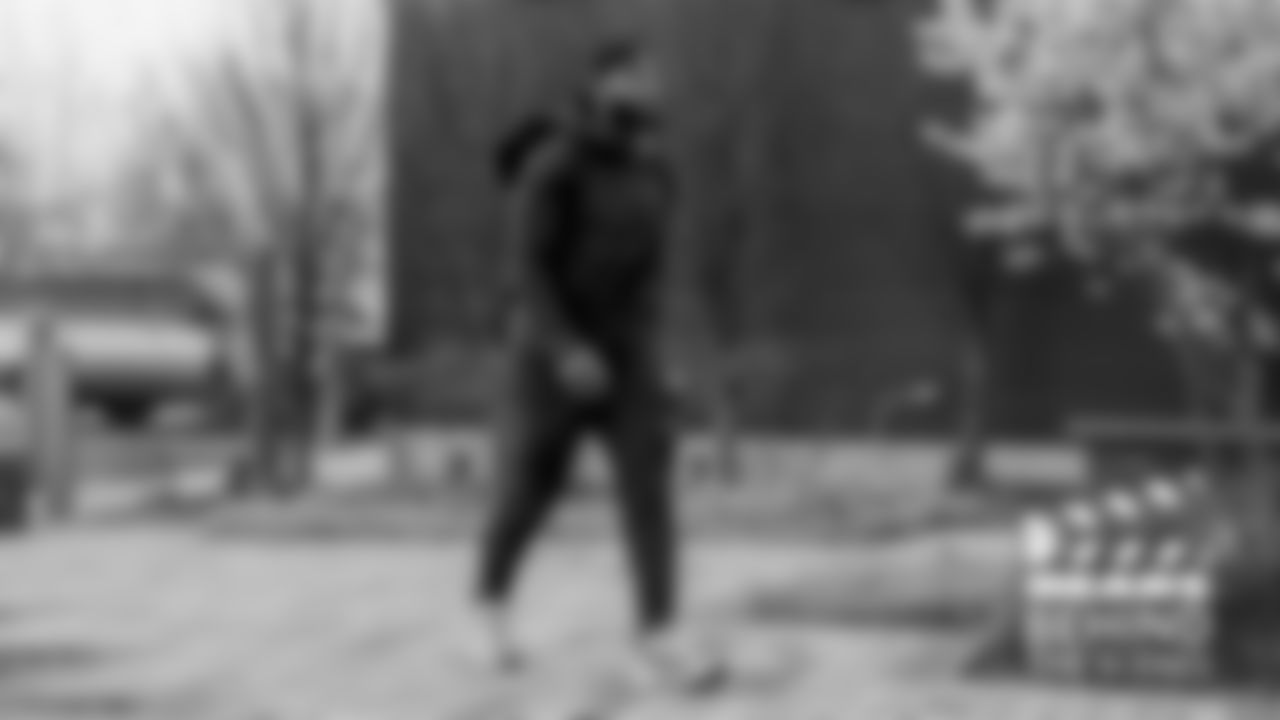For the first time since January, Bears players returned to Halas Hall en masse Monday for the start of the team's voluntary offseason program.
"It almost feels like the first day of school," said linebacker Jack Sanborn. "Everybody's been gone doing their own thing for the past 3-4 months, so to get everyone back in the building and to see the guys, it's an exciting time."
"It's like that first time you go to college and then you leave for Christmas break, and you come back and see everybody," added fullback Khari Blasingame. "It's like a reunion. It's energetic because we've got high expectations, high goals. The energy's definitely high. Everybody's excited."
Coach Matt Eberflus kicked off the proceedings by conducting a team meeting Monday morning. His message, according to Sanborn, involved "just setting the standard on Day 1 of what he wants the team to look like, what we all want to be and where we want to go."
Speaking to reporters at the NFL owners meetings last month in Florida, Eberflus expressed his eagerness to begin the offseason program.
"I'm most excited about April 15," he said at the time. "The evaluation of the talent in the draft, in free agency, I like that part. But what I love is when the players come back. This is going to be a critical nine or 10 weeks in the offseason before we go to summer break. That's going to be fun to be able to bring those guys together."
NFL offseason programs consist of three phases. During Phase 1, which lasts the first two weeks, activities are limited to strength and conditioning and physical rehab, with only strength and conditioning coaches allowed on the field with players. Helmets are prohibited, and footballs are permitted on the field only for quarterbacks throwing to receivers provided they are not covered by other players.
In the second phase, which lasts three weeks, all coaches will be allowed on the field. Workouts may include individual player instruction and drills, but helmets and drills pitting the offense against the defense are prohibited. The third phase, which will be conducted over four weeks, may include up to 10 days of organized team activity (OTA) workouts. All coaches are permitted on the field and players may wear helmets, but one-on-one drills involving the offense and defense are not allowed. Live contact is also prohibited in all offseason workouts.
This offseason the Bears will focus on installing a new offense and integrating players they've acquired this offseason into their systems on both sides of the ball. But Eberflus will also place a major emphasis on building camaraderie in the locker room.
"The most important part that you have beside scheme is the relationships," Eberflus said. "We're going to do a great job intermixing the team to make sure that we get to know each other on a personal level and a deeper level than just football, because I think that's the glue that holds you together. The steel that's the middle of your football team is the relationship piece of it."
Take a look at Bears players arriving at Halas Hall for Phase 1 of the team's voluntary offseason program.

DB Greg Stroman Jr.

LS Cameron Lyons

DB Douglas Coleman III

QB Tyson Bagent

DB Jonathan Owens

OL Darnell Wright

LB Amen Ogbongbemiga

WR DJ Moore

DB Elijah Hicks

DB Kyler Gordon

DB Tarvarius Moore

OL Ryan Bates

FB Khari Blasingame

TE Stephen Carlson

RB Travis Homer

P Corliss Waitman

DL Michael Dwumfour

LB T.J. Edwards

RB Roschon Johnson

OL Aviante Collins and OL Matt Pryor

DL Gervon Dexter Sr.

P Trenton Gill

LB Jack Sanborn

WR Collin Johnson

OL Larry Borom

WR Nsimba Webster

OL Ja'Tyre Carter

LB Noah Sewell

OL Jerome Carvin

DB Adrian Colbert

Kevin Byard III

DL Dominique Robinson

OL Jake Curhan

K Cairo Santos and LS Patrick Scales

OL Teven Jenkins and OL Braxton Jones

DB Jaylon Jones

DB Terell Smith

WR Dante Pettis

WR Tyler Scott

TE Gerald Everett

LB Tremaine Edmunds

WR Velus Jones Jr.

OL Bill Murray

DL Andrew Billings

LB Micah Baskerville and DB Josh Blackwell

DL Zacch Pickens

DL Khalid Kareem

DB Tyrique Stevenson

RB D'Andre Swift
Bears players understand the importance of creating those bonds.
"It's the biggest team sport there is," Sanborn said. "You've got 53 guys all with one mission in mind and one goal, so that camaraderie and that team building and building relationships is huge."
"That's super important," Blasingame said. "A lot of the guys that I've talked to are really focusing on that this year, not just the communication on the field but doing stuff off the field, going to hang out. I think that's going to be a big thing for us."
"When you play a game like football, you've got to have that chemistry and that trust and belief," added running back Roschon Johnson. "Once you have that established in the locker room, a true culture becomes easier [to build]. It's definitely important and something I can tell coach Flus is taking ownership in trying to establish."







